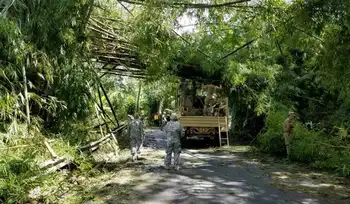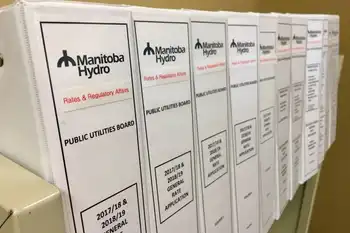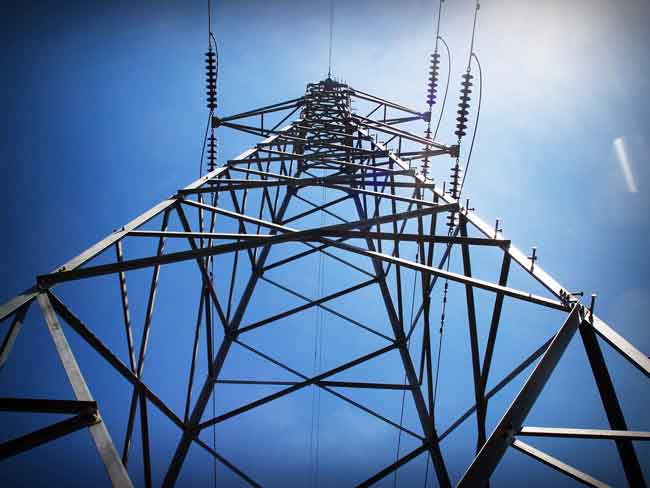CAA Quebec Shines at the Quebec Electric Vehicle Show

Protective Relay Training - Basic
Our customized live online or in‑person group training can be delivered to your staff at your location.

- Live Online
- 12 hours Instructor-led
- Group Training Available
CAA Quebec Electric Mobility spotlights EV adoption, charging infrastructure, consumer education, and sustainability, highlighting policy collaboration, model showcases, and greener transport solutions from the Quebec Electric Vehicle Show to accelerate climate goals and practical ownership.
Key Points
CAA Quebec's program advancing EV education, charging network advocacy, and collaboration for sustainable transport.
✅ Consumer education demystifying EV range and charging
✅ Hands-on showcases of new EV models and safety tech
✅ Advocacy for faster, wider public charging networks
The Quebec Electric Vehicle Show has emerged as a significant event for the automotive industry, drawing attention from enthusiasts, industry experts, and consumers alike, similar to events like Everything Electric in Vancouver that amplify public interest. This year, CAA Quebec took center stage, showcasing its commitment to promoting electric vehicles (EVs) and sustainable transportation solutions.
A Strong Commitment to Electric Mobility
CAA Quebec’s participation in the show underscores its dedication to facilitating the transition to electric mobility. With the rising concerns over climate change and the increasing popularity of electric vehicles, as Canada pursues ambitious EV targets nationwide, organizations like CAA are pivotal in educating the public about the benefits and practicality of EV ownership. At the show, CAA Quebec offered valuable insights into the latest trends in electric mobility, including advancements in technology, charging infrastructure, and the overall impact on the environment.
Educational Initiatives
One of the highlights of CAA Quebec's presentation was its focus on education. The organization hosted informative sessions aimed at demystifying electric vehicles for the average consumer. Many potential buyers are still apprehensive about making the switch from traditional gasoline-powered cars. CAA Quebec addressed common misconceptions about EVs, such as range anxiety and charging challenges, providing attendees with the knowledge they need to make informed decisions.
The sessions included expert panels discussing the future of electric vehicles, with insights from automotive industry leaders and environmental experts, and addressing debates such as experts questioning Quebec's EV push that shape policy discussions.
Showcasing Innovative EVs
CAA Quebec also showcased a variety of electric vehicles from different manufacturers, giving attendees the chance to see and experience the latest models firsthand, similar to a popular EV event in Regina that drew strong community interest. This hands-on approach allowed potential buyers to explore the features of EVs, from performance metrics to safety technologies. By allowing consumers to interact with the vehicles, CAA Quebec helped to bridge the gap between interest and action, encouraging more people to consider an electric vehicle as their next purchase.
Addressing Infrastructure Challenges
A significant barrier to the widespread adoption of electric vehicles remains the availability of charging infrastructure. CAA Quebec took the opportunity to address this critical issue during the show. The organization has been actively involved in advocating for improved charging networks across Quebec, emphasizing the need for more public charging stations and faster charging options, where examples like BC's Electric Highway illustrate how corridor charging can ease long-distance travel concerns.
Collaboration with Government and Industry
CAA Quebec’s efforts are bolstered by collaboration with both government and industry stakeholders. The organization is working closely with provincial authorities to develop policies that support the growth of electric vehicle infrastructure. Additionally, partnerships with automotive manufacturers are paving the way for more sustainable practices in vehicle production and distribution, and utilities exploring vehicle-to-grid pilots in Nova Scotia to enhance grid resilience.
A Bright Future for Electric Vehicles
The Quebec Electric Vehicle Show highlighted not only the current state of electric mobility but also its promising future, reflected in growing interest in EVs in southern Alberta and other provinces. With the support of organizations like CAA Quebec, consumers are becoming more aware of the benefits of electric vehicles. This awareness is crucial as Quebec aims to achieve its ambitious climate goals, including a significant reduction in greenhouse gas emissions.
CAA Quebec's presence at the Quebec Electric Vehicle Show exemplifies its leadership in promoting electric vehicles and sustainable transportation. By focusing on education, showcasing innovative models, and advocating for improved infrastructure, CAA Quebec is helping to pave the way for a greener future. As the automotive landscape continues to evolve, the insights and initiatives presented at the show will play a vital role in guiding consumers towards embracing electric mobility. The future is electric, and with organizations like CAA Quebec at the helm, that future looks promising.











